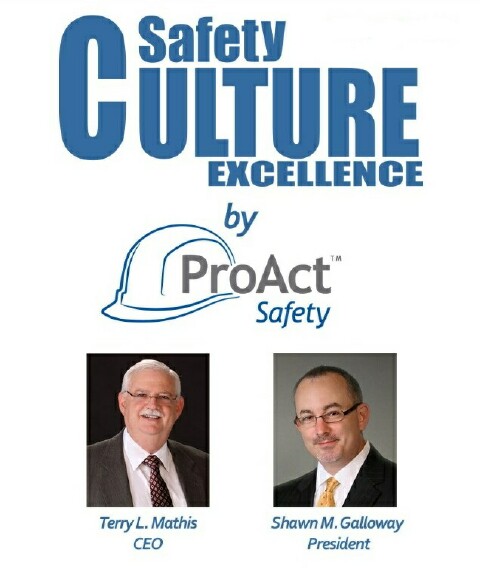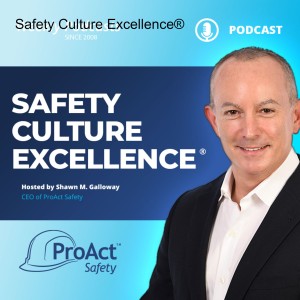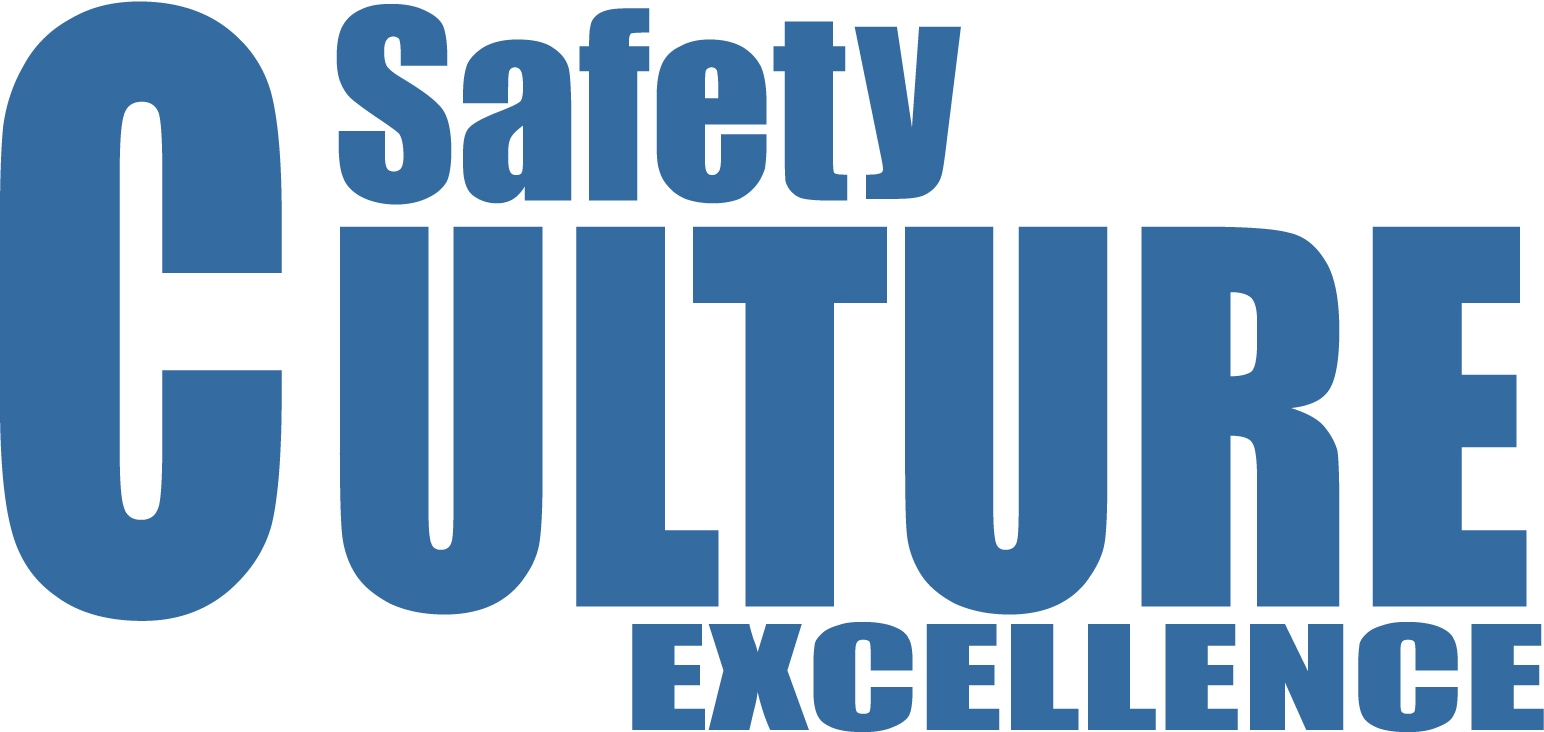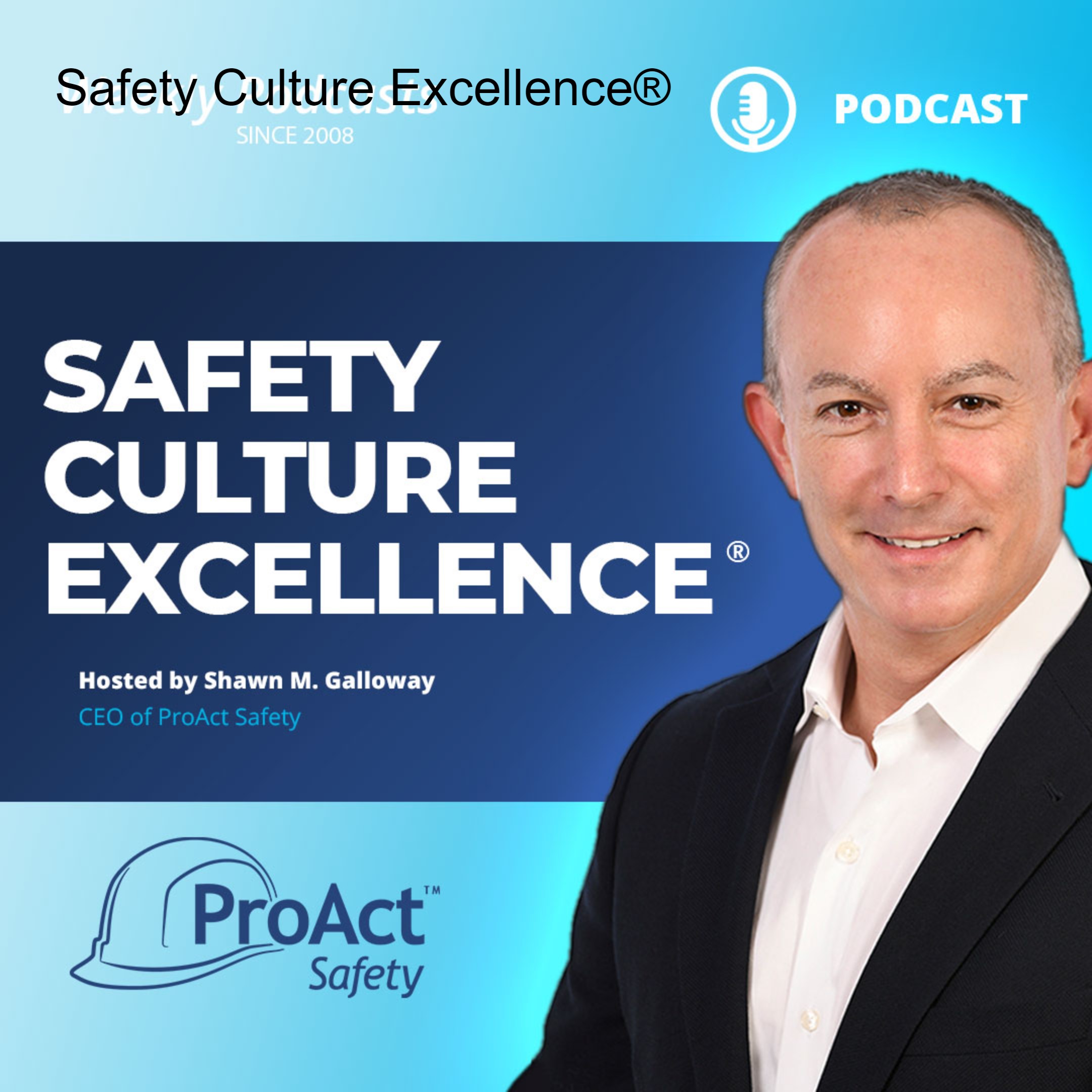Episodes

Wednesday Dec 11, 2013
Showing Up: Step One of Safety Leadership
Wednesday Dec 11, 2013
Wednesday Dec 11, 2013
We have been told that the first step of doing any job is showing up. This is equally true of the job of leading safety. Leaders who are noticeably absent lose opportunities to effectively lead. Obviously leaders cannot be everywhere every time; but they can pick and choose key opportunities to emphasize the importance of safety with their presence.
When tragedies happen and leaders don’t show up, what is the message sent to the troops? When major new safety initiatives begin without the in-person support of key leaders, how official and important are they. When organizations have safety teams or committees which oversee safety efforts, how do they proceed when leaders fail to attend?
The physical presence of leaders must be accompanied by their involvement and attention as well. A worker commented recently, “There was a serious safety incident and none of the leaders got mad.” He reflected that at his last job leaders showed emotions when safety efforts didn’t go well and caused heated discussions and decisive actions. In short, he equated emotion with caring. Leaders show they care when they show up and participate. What they do in their offices and the boardroom will not have the necessary impact if they are not present and engaged at key happenings in the workplace. Leaders, start with step one.
-Terry L. Mathis
Terry L. Mathis is the founder and CEO of ProAct Safety, an international safety and performance excellence firm. He is known for his dynamic presentations in the fields of behavioral and cultural safety, leadership, and operational performance, and is a regular speaker at ASSE, NSC, and numerous company and industry conferences. EHS Today listed Terry as a Safety Guru in ‘The 50 People Who Most Influenced EHS in 2010, 2011 and 2012-2013. He has been a frequent contributor to industry magazines for over 15 years and is the coauthor of STEPS to Safety Culture Excellence, 2013, WILEY.

Wednesday Nov 27, 2013
Leading vs. Lagging Indicators in Safety
Wednesday Nov 27, 2013
Wednesday Nov 27, 2013
As more and more leaders and safety professionals realize the limitations of reactive safety, they search for leading indicators to help them manage safety more proactively. This thinking fueled the concept that lagging indicators alone, are not truly representative of safety performance, nor are they predictive or prescriptive.
The first round of so-called “leading indicators” was little more than a measurement of safety-related activities: hours of safety training, attendance at safety meetings, participation in safety programs, etc. OSHA’s crackdown on incentives that could potentially suppress reporting of accidents drove many organizations to base their incentives on these activity metrics rather than simply not having an accident.
When behavior-based safety became the rage, the measurement of behaviors from observations came to be thought of as a leading indicator. As safety culture became a buzz phrase, perception surveys gained in popularity and came to be considered another potential leading indicator. The search for meaningful leading indicators goes on because no one of these has proven adequate in predicting and preventing injuries.
Where none of these alone succeed, all of them together potentially can. A balanced-scorecard approach in which the metrics not only complement, but predict each other has proven quite effective in proactively predicting how to prevent accidents. When you measure how much activity it takes to change perceptions, how much of a change in perceptions it takes to change behaviors, and how much behavior change it takes to change the lagging indicators, you begin to truly measure the effectiveness of safety efforts. Just as balanced scorecards have revolutionized strategic management, with our most successful clients, balanced scorecards for safety have proven to have a transformational impact on safety management. How balanced are your measurements?
-Terry L. Mathis
Terry L. Mathis is the founder and CEO of ProAct Safety, an international safety and performance excellence firm. He is known for his dynamic presentations in the fields of behavioral and cultural safety, leadership, and operational performance, and is a regular speaker at ASSE, NSC, and numerous company and industry conferences. EHS Today listed Terry as a Safety Guru in ‘The 50 People Who Most Influenced EHS in 2010, 2011 and 2012-2013. He has been a frequent contributor to industry magazines for over 15 years and is the coauthor of STEPS to Safety Culture Excellence, 2013, WILEY.

Friday Oct 25, 2013
Is Your Safety Program Viral or Vile?
Friday Oct 25, 2013
Friday Oct 25, 2013
How many of your employees brag about the safety program and are excited about their participation? How many would rather pay their own money to not participate in or attend safety events? Engagement is accepted as an important indicator of the culture and the shared priority or value of safety. How many excited and willing participants do you have in your safety culture? How many individuals are eager to create and star-in a video to show precisely how proud they are? Weatherford found some.
As I’m currently traveling the many global oil fields to assess the major contractors' cultures of a major Oil and Gas Operator client, I’m exposed to some similar and some radically different approaches to safety. All of the organizations I’m interviewing have mature safety programs and evolving cultures around safety. Not all have videos they can point me to that outlines an approach they are proud of.
In some recent interviews, several individuals directed me to a video to learn more about a particular approach within their company, Weatherford. When the video was first brought to my attention in 2012, I was impressed, but not as impressed as when over a year later, across the world from the group that created it, others were bragging about it. To see this video, visit this YouTube link: http://youtu.be/i1yJgRJ4za4
I should point out that other organizations have videos created to highlight the pride in safety and accomplishments. Not all have reached a point of becoming viral. On a side note, I find it shameful that the majority of videos having to do with safety that become viral, are injury-related. I received one today that was intended to (according to accompanying message) provoke laughter. I stopped it half-way through as it was questionable whether the Darwin-award winners survived or not. I’m surprised people find decisions that led to major injury or death, funny.
Do your safety programs, videos and information make people smile, create interest and facilitate engagement? Or, do they prompt cringing, create disengagement and turn people off to the message? Safety should be viewed as more than a condition of employment. Safety adds value to the job site, personnel involved, and the families they are working to support. When people enjoy the content, they might (but rarely) share if they have the extra time. When they are a part of the content and it is entertaining and adds value, they make time to share.
- Shawn M. Galloway
Shawn M. Galloway is the President of ProAct Safety and the coauthor of two books, his latest published Feb 2013 by Wiley is STEPS to Safety Culture Excellence. As an internationally recognized safety excellence expert, he has helped hundreds of organizations within every major industry to achieve and sustain excellence in performance and culture. He has been listed in this year’s National Safety Council Top 40 Rising Stars, EHS Today Magazine’s 50 People Who Most Influenced EHS and ISHN Magazine’s POWER 101 – Leaders of the EHS World and again in the recent, elite list of Up and Coming Thought Leaders. In addition to the books, Shawn has authored over 300 podcasts, 100 articles and 80 videos on the subject of safety excellence in culture and performance.

Friday Oct 18, 2013
Misunderstanding Hazards and Risks
Friday Oct 18, 2013
Friday Oct 18, 2013
I heard a good analogy recently about the difference between hazards and risks. “Hazards are the sharks you spot in ocean while standing on the shore. They become Risks when you get in the water.” How well do you help those you lead, understand, identify, and respond to the differences?
With good intentions, many organizations prompt activities to purposefully and proactively identify potential hazards in the workplace. While this is admirable, it becomes a complex issue when there isn’t a shared understanding of what a hazard is and isn’t, and how some turn into risk. But, not all risk will turn into incidents and injuries. Further, if there is a shared belief that “safe means zero risk and safety first”, or “safety is our number one priority”; might there be mixed signals sent?
Consider how this might be interpreted, “They say our goal is zero injuries and zero risks and that ‘safety first’ means we are controlling all the risks, yet we have brought several to management’s attention with no action!” This isn’t just hyperbole, this misunderstanding was the result of a conversation with a key union official within a client organization.
Let’s provide some further context on hazards and risk. Wikipedia provides a good definition of hazard. “A hazard is a situation that poses a level of threat to life, health, property, or environment. Most hazards are dormant or potential, with only a theoretical risk of harm; however, once a hazard becomes "active", it can create an emergency situation. A hazardous situation that has come to pass is called an incident. Hazard and possibility interact together to create risk.” Note the key points in this, “most hazards are… only a theoretical risk of harm; however, once a hazard becomes ‘active’…”
A further search in Wikipedia provides another good explanation of risk. “Risk is the potential of loss (an undesirable outcome, however not necessarily so) resulting from a given action, activity and/or inaction. The notion implies that a choice having an influence on the outcome sometimes exists (or existed). Potential losses themselves may also be called "risks". Any human endeavor carries some risk, but some are much riskier than others.” Again, some key points to tease out: “Risk is the potential of loss… resulting from a given action”. Moreover, it points out “Any human endeavor carries some risk…”
Some safety advocates propose there is little point in debating terminology. I strongly disagree. How common language is used influences beliefs and behaviors within the culture. The English language has many different meanings for the same word. Have you ever used a word or phrase that was interpreted incorrectly? Of course you have. You know how important it is to use the correct words when communicating with your family. Why should our dialogue within safety be less important? After all, isn’t it our number one priority? Or wait, is it a core value?
- Shawn M. Galloway
Here is a short video on this topic: http://youtu.be/_BrpiL4rxgk
Shawn M. Galloway is the President of ProAct Safety and the coauthor of two books, his latest published Feb 2013 by Wiley is STEPS to Safety Culture Excellence. As an internationally recognized safety excellence expert, he has helped hundreds of organizations within every major industry to achieve and sustain excellence in performance and culture. He has been listed in this year’s National Safety Council Top 40 Rising Stars, EHS Today Magazine’s 50 People Who Most Influenced EHS and ISHN Magazine’s POWER 101 – Leaders of the EHS World and again in the recent, elite list of Up and Coming Thought Leaders. In addition to the books, Shawn has authored over 300 podcasts, 100 articles and 80 videos on the subject of safety excellence in culture and performance.

Wednesday Oct 16, 2013
Sticky Safety Cultures
Wednesday Oct 16, 2013
Wednesday Oct 16, 2013
A scholar once said that culture wasn’t so much what was in the heads of its members as what was between their heads. In other words, what they share in common. Leaders often ask how they can make safety cultural. The short answer is, get everyone on the same page. If every worker has the same definition of key safety concepts, the same vision of what safety excellence looks like, and can recite their roles, responsibilities and desired results, these concepts become cultural
An effective technique for culture building is to make communication and training more “sticky.” Sticky means that the message or training sticks in workers’ memory and can be brought to mind quickly. For example, if you want workers to remember a 3-or-4 step process, give each step a clever name and make them into an acronym. Repeat them in meetings and training often and ask trainees to repeat them back until they do so easily.
Just as every American school child learns the Pledge of Allegiance to the Flag, workers should be able to recite basic safety goals, objectives, definitions, and other concepts. Even if the words are not exactly the same the concepts should be. If the concept is not in the workers; memory, it will never be in their habits. Shared habits form common practice and common practice is a visible artifact of culture.
-Terry L. Mathis
Terry L. Mathis is the founder and CEO of ProAct Safety, an international safety and performance excellence firm. He is known for his dynamic presentations in the fields of behavioral and cultural safety, leadership, and operational performance, and is a regular speaker at ASSE, NSC, and numerous company and industry conferences. EHS Today listed Terry as a Safety Guru in ‘The 50 People Who Most Influenced EHS in 2010, 2011 and 2012-2013. He has been a frequent contributor to industry magazines for over 15 years and is the coauthor of STEPS to Safety Culture Excellence, 2013, WILEY.

Monday Sep 02, 2013
305 - Sticky Stories are Safety Savvy
Monday Sep 02, 2013
Monday Sep 02, 2013
Greetings everyone, this podcast recorded while in Kissimmee, Florida. I’d like to share an article written by Terry Mathis, published May 2013 in EHS Today Magazine. It was titled, Sticky Stories are Safety Savvy. The published article can either be found on the magazine’s website or under Insights at www.ProActSafety.com. I hope you enjoy the podcast this week. If you would like to download or play on demand our other podcasts, please visit the ProAct Safety’s podcast website at: http://www.safetycultureexcellence.com. If you would like access to archived podcasts (older than 90 days – dating back to January 2008) please visit www.ProActSafety.com/Store. For more detailed strategies to achieve and sustain excellence in performance and culture, pick up a copy of our book, STEPS to Safety Culture Excellence - http://proactsafety.com/insights/steps-to-safety-culture-excellence Have a great week! Shawn M. Galloway ProAct Safety

Wednesday Aug 28, 2013
Lateral Communication
Wednesday Aug 28, 2013
Wednesday Aug 28, 2013
When we talk to most executives about effective safety communication, they instantly focus on the vertical information (i.e., what flows from leaders to the workers and what workers send back to leaders). Vertical communication can happen directly, through various communication media, or through the usual organizational levels person-to-person. While this vertical information is important, so is lateral communication: what goes between workers and other workers.
Safety engagement and behavioral programs often attempt to increase and/or improve lateral communication. Regardless of whether you are using such a program or simply wanting to improve, if you want your workers to talk effectively to each other about safety, you should address the following issues:
1) Conversations between workers should be focused on improvement targets, not just common practice. Targeted improvements create legitimate talking points and create discrete dichotomies of “did you do this” or “did you not do this?” Having workers simply evaluate each others performance more often leads to disagreement than improvement. Remember to consider targeting improvements in safety culture as well as accident prevention.
2) The model for conversations should be one of coaching rather than confrontation. Confrontation creates enemies who disagree. Coaching creates allies in change.
The goals of lateral conversations should be to, A) Encourage those working toward improvement, or B) To discover what is influencing or blocking improvements in those observed not meeting improvement goals.
Often the best way of discovering such issues is simply to ask “Why?” or “Why not?” when a fellow worker is not doing the targeted precaution. Approaches that follow these guidelines more often prove successful.
-Terry L. Mathis
Terry L. Mathis is the founder and CEO of ProAct Safety, an international safety and performance excellence firm. He is known for his dynamic presentations in the fields of behavioral and cultural safety, leadership, and operational performance, and is a regular speaker at ASSE, NSC, and numerous company and industry conferences. EHS Today listed Terry as a Safety Guru in ‘The 50 People Who Most Influenced EHS in 2010, 2011 and 2012-2013. He has been a frequent contributor to industry magazines for over 15 years and is the coauthor of STEPS to Safety Culture Excellence, 2013, WILEY.

Monday May 16, 2011
181 – I Had Your Attention, Now What? Ensuring Communication Effectiveness
Monday May 16, 2011
Monday May 16, 2011
Greetings, this podcast recorded while working in College Station, Texas. For the podcast this week I’d like to share an article I wrote that was published in the March 2011 edition of Canadian Occupational Safety Magazine. It was titled “I Had Your Attention, Now What? Ensuring Communication Effectiveness”. The published article can either be found at www.COS-MAG.com or under Insights at www.ProActSafety.com.
I hope you enjoy the podcast this week. If you would like to download or play on demand our other podcasts, please visit the ProAct Safety’s podcast website at: http://www.safetycultureexcellence.com
Have a great week!
Shawn M. Galloway
ProAct Safety, Inc

Monday Mar 28, 2011
174 - Preparing Workers for Safety Improvement
Monday Mar 28, 2011
Monday Mar 28, 2011
Greetings, this podcast recorded while working in El Paso, Texas. For the topic this week I’d like to share an article written by ProAct Safety’s Founder and CEO, Terry L. Mathis. It was published in January 2011 by Safety.com. It was titled “Preparing Workers for Safety Improvement” The published article can be found at www.Safety.com or under Insights at www.ProActSafety.com.
I hope you enjoy the podcast this week. If you would like to download or play on demand our other podcasts, please visit the ProAct Safety’s podcast website at: http://www.safetycultureexcellence.com
Have a great week!
Shawn M. Galloway
ProAct Safety, Inc

Monday Mar 07, 2011
171 – Communicating Safety: Can I Get A Receipt?
Monday Mar 07, 2011
Monday Mar 07, 2011
Greetings, this podcast recorded while working in Las Vegas, Nevada. For the podcast this week I’d like to share an article I wrote that was published in November 2010 by Canadian Occupational Safety Magazine. It was titled “Communicating Safety: Can I Get A Receipt?” The published article can either be found at www.COS-Mag.com or under Insights at www.ProActSafety.com.
I hope you enjoy the podcast this week. If you would like to download or play on demand our other podcasts, please visit the ProAct Safety’s podcast website at: http://www.safetycultureexcellence.com
Have a great week!
Shawn M. Galloway
ProAct Safety, Inc

